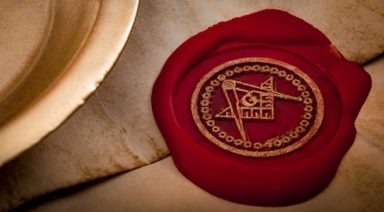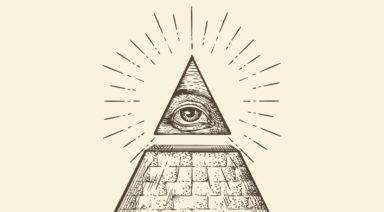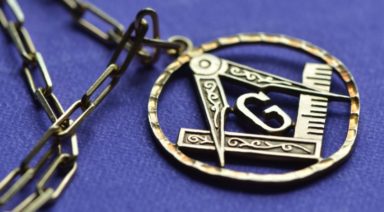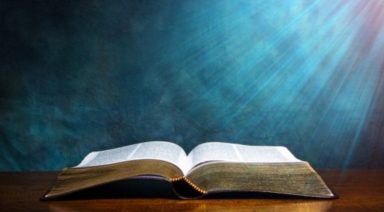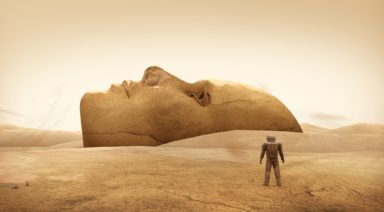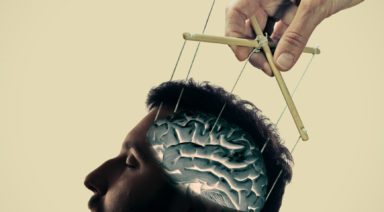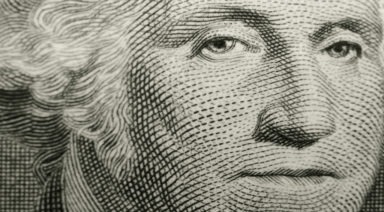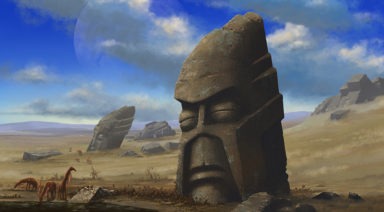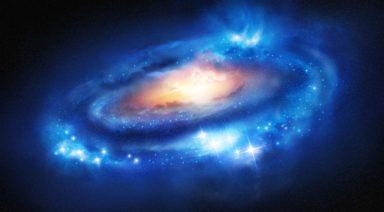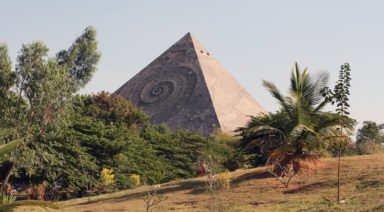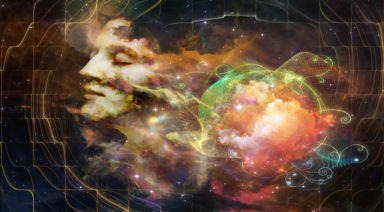Beyond the Easter Bunny: The True Origins and History of Easter

When you think of Easter, what comes to mind? Bunnies, egg hunts, brightly colored hats and baskets, chocolate eggs? Or does the spring holiday resonate on a deeper, more spiritual level? Easter is celebrated around the world in many different ways, from the modernized (and some say homogenized) version, to the more traditional and religious ones. To explore the origins of Easter is to discover a rich and ancient earth-based tradition, rooted in pagan culture, and begs the question — what are the real origins and history of Easter?
The History Of Easter: A Moveable Feast
While many associate the Easter holiday with the Christian festival celebrating Jesus’s resurrection, the history of Easter is more complex. “Easter actually began as a pagan festival celebrating spring in the Northern Hemisphere, long before the advent of Christianity. Following the advent of Christianity, the Easter period became associated with the resurrection of Christ” and the holiday was still actively celebrated as a pagan festival associated with the spring equinox,” according to according to ABC News Australia
So, what does the term 'pagan' mean? Pagan is “derived from the Late Latin paganus, which was used at the end of the Roman Empire to name those who practiced a religion other than Christianity, Judaism, or Islam.” A polytheistic nature-base belief system, Pagan Federation International contends that “paganism is the ancestral religion of the whole of humanity [which] remains active throughout much of the world today.”
As it relates to the origins of Easter, the pagan outlook on the holiday is one connected to the cycles of the earth. In fact, one of the unique aspects of the history of Easter is the unfixed nature of the date, a decision made in 325 AD by the Council of Nicaea, the first Christian church council.
Highlighting Easter’s pagan history and origins, the council determined that the holiday should be celebrated on the Sunday after the first full moon of the Spring Equinox. The mobility of the date is why Easter is often called a “moveable” feast.
The Origins of Easter: Eostre, Ostara, And Paschal
One of the most popular stories of the origins of Easter is that of Eostre, an Anglo-Saxon goddess of renewal and the spring equinox. According to Carole Cusack, University of Sydney professor and author of The Goddess Eostre: Bede’s Text and Contemporary Pagan Tradition(s), “Eosturmonath [April] has a name which is now translated ‘Paschal month’, and which was once name after a goddess of theirs named Eostre, in whose honour feasts were celebrated in that month.”
Professor Cusack writes that in Greece and other parts of Europe, the term “Easter” is derived from the word pascha and is believed to be rooted in the Jewish spring festival of Passover. There are many parallels between the two holidays, including the shared time of the festivals, as well as the types of foods eaten, such as eggs, and the paschal or sacrificial lamb.
In the pagan of Ostara, the celebration of renewal, the earth, fertility, and abundance, Eostre is one of a number of spring equinox deities honored throughout ancient traditions including:
- Ashanti, West African fertility and spring goddess and mother of Anansi, the trickster
- Cybele, Roman mother-goddess
- Freya, Norse fertility goddess and partner of Odin
- Osiris, Egyptian god of farming, agriculture, and civilization
- Ishtar, Assyrian and Babylonian goddess of fertility, sex, and power
- Saraswati, Hindu goddess of the arts and learning
Is Easter a Christian Holiday, Pagan Holiday, or Both?
Many consider Easter to be a solely Christian holiday. However, historical and religious scholars have more say on the topic of whether Easter is a Christian or Pagan tradition or both. The New Unger’s Bible Dictionary defines the word “Easter” as being of Anglo-Saxon origin and related to “Eastra, the goddess of spring, in whose honour sacrifices were offered about Passover time each year. By the eighth century Anglo–Saxons had adopted the name to designate the celebration of Christ’s resurrection.”
Dr. Tony Nugent, professor of Theology and Religious Studies at Seattle University and a Presbyterian minister, states that “the Easter story comes from the Sumerian legend of Damuzi (Tammuz) and his wife Inanna (Ishtar),” a myth steeped in fertility, death, and renewal. In addition to this myth, other pre-Christianity stories of resurrection abound, from the Egyptian god, Horus to the Greek god Dionysus, and many more.
Symbols of Easter and the Spring Equinox
The symbols most associated with Easter, both in today’s society as well as dating back to the holiday’s earliest origins include rabbits, eggs, and baby animals such as lambs, but the question begs, why do they hold so much meaning?
- Rabbits: The Easter “bunny” is not only a much-beloved character that brings joy and easter eggs to children; the symbol of the rabbit, or hare, is connected to Eostre, whose animal symbol was the rabbit, and to spring renewal, as well as fertility, good luck, and abundance. The Easter bunny is also associated with “Osterhase,” a German mythological figure who hatched and hid eggs for children and adults to find on Easter Sunday. It is believed that Ostara once healed a wounded bird by changing it into a hare, who repaid Ostara with laying eggs a way of expressing gratitude.
- Easter Eggs: Long considered the symbol of renewal and fertility, the egg’s relationship to the pagan origins of Easter dates back to ancient civilizations. For example, in ancient Egypt, the egg is the symbol of the sun; for the Babylonians, the egg is the embodiment of Ishtar. The practice of dyeing eggs can be traced to the ancient Persians who colored and ate eggs during their spring festival, while Hindus see the structure of the universe in the shape of an egg Ancient Mesopotamians decorated eggs with bright red dye to symbolize the blood of Jesus, while it is posited that the easter egg is one of the symbols adopted from Judaism’s Passover festival. According to Scientific American easter eggs are associated with another symbol of resurrection — the Phoenix. She writes that the “phoenix was adopted as a Christian symbol in the first century AD. It appears on funeral stones in early Christian art, churches, religious paintings, and stonework. The egg from which it rose has become our Easter egg.” The pagan tradition of breaking Lent with decorating and then eating eggs is still in practice today.
- Paschal Lamb: Derived from the Greek word, pascha, many traditions celebrate the Easter festival with cooked lamb, thought to be related to the sacrificial lamb’s blood smeared on ancient Jewish doorposts to save them from the angel of death. Also, Jesus is often referred to as the “Lamb of God,” however lambs have long been viewed as symbols of innocence and renewal. In pagan traditions, centered in the earth’s cycle, the importance of lambs as the embodiment of spring’s promise is directly related to the abundance of the animals in late winter and early spring.
As spring emerges around us, from crocuses blooming, to longer periods of sunlight, Easter can be a time to reconnect with the cycles of the Earth, as well as with the more expansive history and origins of this ancient celebration of renewal and rebirth. Whether you anxiously await the arrival of the Easter bunny’s overflowing Easter egg basket, or plant a garden in honor of the spring equinox, it’s important to remember that the fertile spirit of this time of year belongs to many traditions, modern and ancient alike.
Famous Members of the Ancient Freemason Society
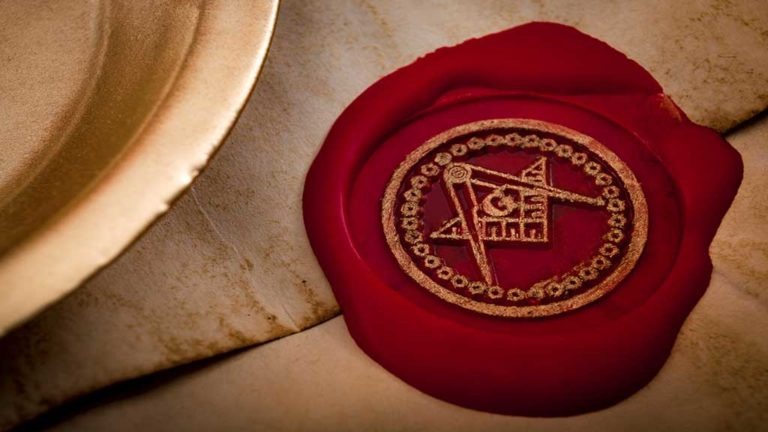
Often associated with cultish rituals, secret handshakes, and grand ceremonial robes, Freemasonry is one of the largest, oldest, and perhaps least understood organizations in the world. Though the society was formally established three hundred years ago in 1717, it is rooted in the builders’ guilds of the early Middle Ages. Indeed, the oldest known Masonic document, the Regius Manuscript, dates to 1390 and describes, in 794 verses, the duties and obligations of the stone cutters and masons.
At its inception, Freemasonry stood as an elite but secret organization to which the builders of Europe’s grand and elaborate cathedrals and castles belonged. Those who joined were not bondsmen, but were free craftsmen — master architects, engineers, and mathematicians — and it was only within the confines of the lodges they built, in their covert meetings, that they shared trade secrets with other guild members and apprentices sworn to secrecy.
As cathedral building stalled and the scope of masonic projects changed, these guilds found it necessary to accept a wider variety of members, branching off to form different sects that they called “lodges.” Eventually, they all coalesced into one formal organization, known as the “Grand Lodge.”
The Knights Templar
The Knights Templar was an order of warrior-like Catholic monks in 1118 A.D. who guarded crusading pilgrims, as they made their way from Jaffa to Jerusalem. They are said to have harvested a great treasure from Solomon’s temple that King Philip IV of France desired, and so the king had them arrested, burning their leader, Jacques DeMolay at the stake. What happened to the Knights Templar after their arrest has become lost to history. Though Encyclopedia Britannica asserts that the Freemasons do not have any historical connection with the Knights Templar, there is still quite a bit of suspicion that the Knights Templar re-emerged in the 1700s, and even helped start the French Revolution, to exact revenge.
Masonic Sacred Geometry
One of the defining aspects of Masonic architecture and art is its representation of sacred geometry — shapes and various geometric patterns that are found repeated throughout the natural world. The Freemasons believed that sacred geometry imbued their architecture or creation with a sense of the divine. For example, the Fibonacci Sequence, one of the most famous patterns in mathematics, is represented by the spiral shape, symbolizing a gateway or life cycles. One will often find winding staircases in castles and cathedrals, symbolizing life’s journey and the awakening of the soul.



